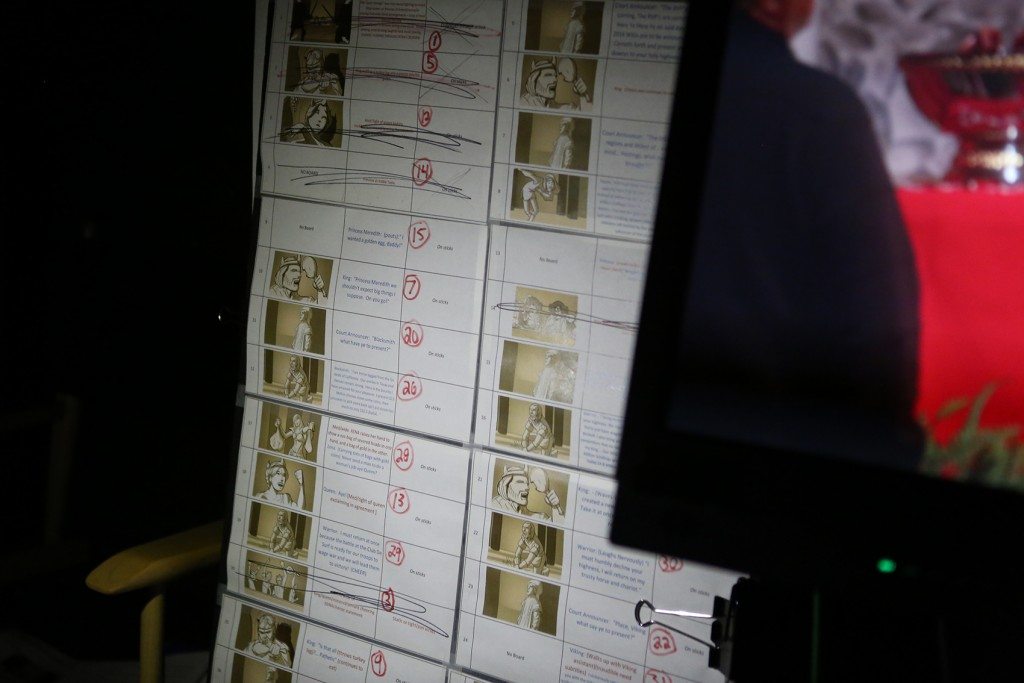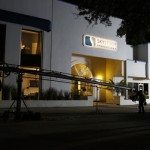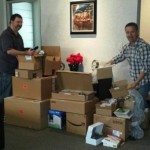In business, time equals money and no one likes wasting either. Avoiding the pitfalls of…
Pre-Production: A Case Study
The Need for Pre-Production Planning
We have talked before about pre-production planning and how important it is to the success of any project – large or small. As a commercial production company we have to take this step very seriously. Our clients have high expectations of us and we have even higher standard for ourselves. We approach every shoot with a fine tuned pre-production method to ensure success on production days through post production and delivery.
In this case study you will be able to walk through part of this process with us – through planning and into execution. This is how we actualized the vision that we built with our client.
Pre-Production Planning in Action
We worked with Power Design on a 5-minute internal promotional video. They were looking for a new and creative way to present sales figures for a large annual meeting. We partnered with our client to establish creative as well as create wardrobe and set design. This foundation enabled production support to operate efficiently through the production day and transitioned to a seamless hand off to post production. This promotional piece had a total timeline from bid to final delivery of 17 days. These planning and development steps were the most important part of ensuring the success of the project given its short timeline.
Storyboarding
Power Design came to us with a completed script, we had a storyboard artist translate the script into boards while our production team simultaneously came up with set design concepts. Since we were creating a period piece, it was especially important to come up with both the storyboards and set concept together to achieve a cohesive final delivery. A total of 34 boards were used on filming day.
Throughout the shoot our production coordinator worked closely with the line producer to keep track of storyboard progress and time left in the filming day as well as overseeing script notes. These boards and script notes were later handed off to our in-house post production department to work through during the editing process.
Location Scouting and Planning
We had lined up the perfect location for this shoot – and then the location pulled out. Unfortunately, these things can happen, and its our responsibility as a commercial production company to be able to think on our feet and adapt to these sorts of circumstances. A problem like this should never affect the client or the vision of the project. So with 72 hours to first call, we moved on to another plan that ended up working even better than the original location due to the flexibility it offered.
Set Building and Design
We have our own full studio at our disposal 24/7 and luckily had not yet booked it for production on that week. We assessed that our space was fully capable of being used for the entire concept of this production. Using the storyboards and script we set to work on building a complete set from the ground up. This building process begins with a survey of what is on hand. From there we can figure out what raw materials need to be ordered, what can be rented or what should be created and purchased.
Though this particular production was very tongue in cheek, it was important that the setting remain pretty realistic. We installed wood flooring, built plywood walls complete with hinged door and constructed a platform stage with stairs. Set design from this point starts from the concept of what everything will look like from camera’s perspective. Do our wall paper and floor paneling convey the proper texture on screen? Have we thoughtfully covered anything ugly? Are we dressing everything that will be on camera, and more importantly, are we set dressing an area that will never be seen? Do the props make sense?
Props
An array of set dressing and hand props were used in this production to help establish the time period we were trying to convey. We rented two 100 pound thrones for the king and queen, authentic oak barrels, and an array of tableware. We ordered period specific instruments and our costumer brought in medieval weapons to use as hand props throughout the shoot. Real food was used on set to be used by our royal family. Monitoring a set for continuity for a period without electricity brought it own nuances – keeping track of candle burn times.
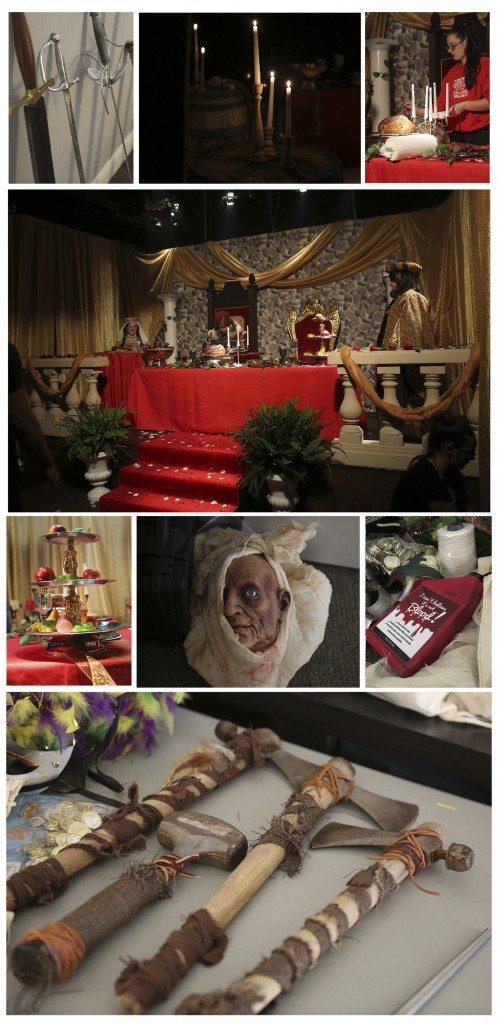
Costuming and Styling
From the date of award, there was a ten day window to complete all pre-production. We worked closely with a great costume stylist with a theater background. She was able to provide 19 whole period specific costumes in this time frame. In an era-specific production it takes an experienced costumer to achieve a cohesive finished product. They need to be part artist, part seamstress and part historian. A great period costumer will never have to look at a style sheet to understand the difference between Medieval and Victorian. As a production company we rely on these support roles for their special touches, whether it be relationships with local costume vendors or having access to the proper specialist vendors. In the end we were able to stay on time, on budget, and true to the period.
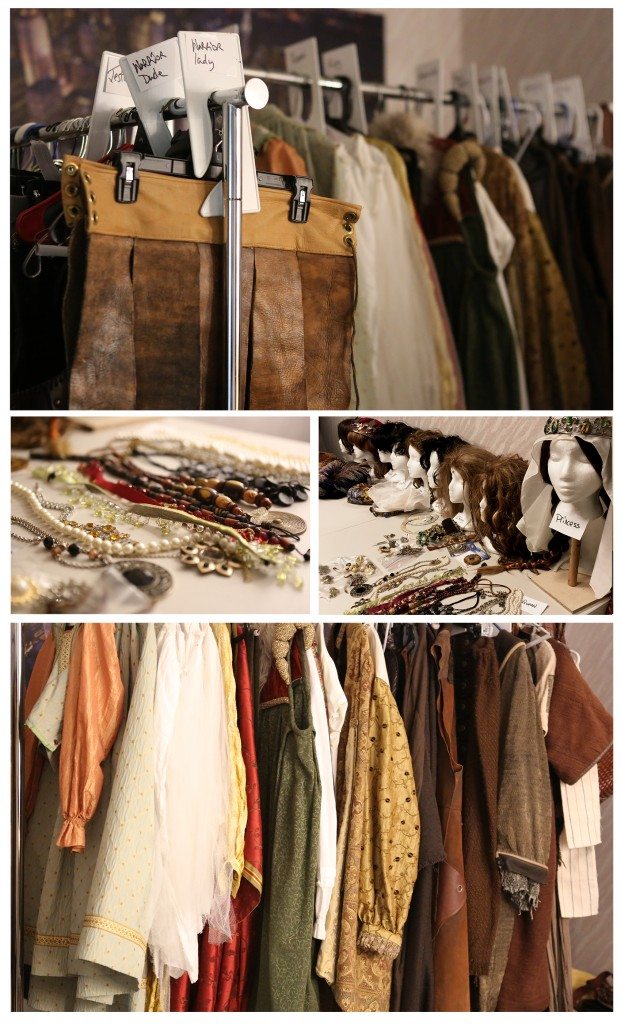
Scheduling
On production day we were on a very strict schedule that offered no room for padding. This project used the client’s staff for all 17 speaking roles, which means there was no option for overtime. This left eight hours for styling and makeup on all talent, getting through filming 34 storyboards, resetting on five camera positions, building track for two dolly shots, and fitting in lunch. That breaks down into approximately 10 minutes per board with an hour total for all camera resets.
We faced two main difficulties going into production day. We obviously had a very strict schedule. We also knew from the storyboards that there was a lot of ground to cover, which required a high amount of camera positions. To overcome these difficulties, we crafted a filming concept that would allow the camera lensing do most of the work for us. We used an Angenieux cinema zoom lens with a dolly in two different configurations. This allowed easy repositioning by using zoom pulls instead of changing lenses and resetting positions on sticks. A configuration like this also bought us time to set up tripods for the remaining three camera positions. We were able to walk into pre-light with a complete plan that allowed us to stay on schedule, wrap on time and having completed every shot.
See all of our BTS photos from this production on our Facebook page!
